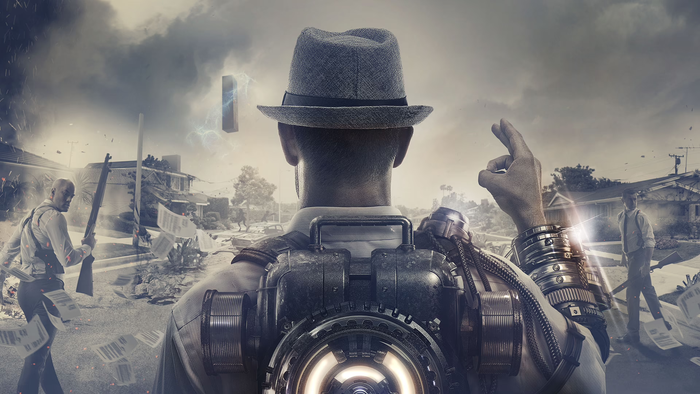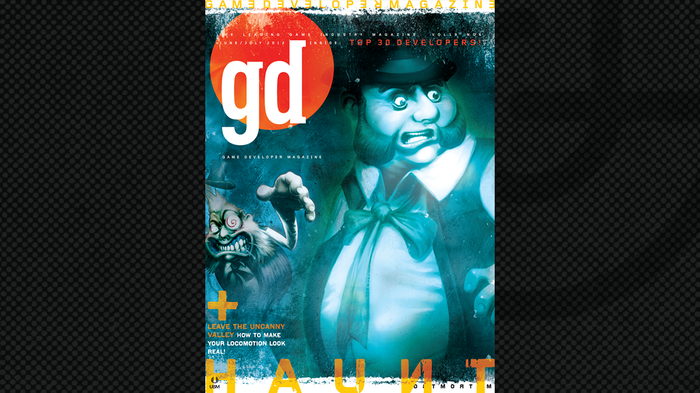Game Studies: What tools do games provide us to “think”? Answering Kurt Squire’s ~20 year old question.
An assignment for my course, BA (HONS) Game Studies. This paper looks at Kurt Squire's, "What tools do games provide us to think?" and how, after nearly 20 years, different games from different genres allow us to do so.

Game Studies: What tools do games provide us to “think”? Answering Kurt Squire’s ~20 year old question.

Kurt Squire asks ‘What are the goals and intentions of players in gaming environments? … Do game players have opportunities to think with authentic tools in gaming environments?’ Since his essay, a vast amount of Game Studies research has examined these questions. Using examples you have researched, discuss how gaming cultures, or games themselves, provide us with the tools to ‘think’. What type of ‘thinking’ does this engage with, and how does it occur?
Introduction
In an early paper in the Game Studies journal, Kurt Squire published ‘Cultural Framing of Computer/Video Games’ where he discusses how video games have been viewed by a variety of different peoples, games as teaching tools and where he would like to see game studies research in the future. In the article, Squire talks about the current research into how children learn from games. According to current research at the time, players only learnt skills that affect them in similar situations such as being a good shot in an FPS game which could be transferred to another. He then goes on to ask the questions “What are the goals and intentions of players in gaming environments?” and “Do game players have opportunities to think with authentic tools in gaming environments?” (Squire, 2002). Since 2002, many larger, more open and dynamic games have been released. In addition, these questions have been explored by other games researchers and this essay will discuss how they can be answered with examples of those current games and cultures that have been created.
Games
Call of Duty: Modern Warfare 2
Call of Duty: Modern Warfare 2 (Infinity Ward, 2009) is an FPS developed in 2009 and features campaign and multiplayer modes. Early into the campaign mode, the mission “No Russian” can be played. The mission involves going undercover as a part of the enemy’s team to kill hundreds of innocent civilians in an airport in order to gain their trust and by doing this, they hope to stop them. The mission is slow and very linear when compared to others from the game. The player is given a large arsenal of weapons to use to kill the civilians with. The game features many destructible/intractable props that are used liberally in the mission to showcase the damage that the player is causing. This level in particular uses a lot of set-pieces which shows civilians dragging other bodies around to move them away from the gunfire (often leading to their own death), large groups running away from the gunmen and others include people limping/crawling away. Checkpoint markers and a single “Follow” sign appears above the enemy team’s leader, “Makarov”. Children’s luggage is shown on the floor. There is very little resistance from airport staff as they only have pistols. 4 Minutes into the level, the player is allowed to move faster and a riot team appears to try and stop them from killing more. Once they have taken out the riot team, the mission ends with them climbing into the back of the ambulance, the player getting killed by Makarov as he knew he was a spy and then leaving. As the player’s body lays lifeless, some of the remaining riot squad move in to examine him. In this situation, the player’s character was an American and once news spreads that one of the shooters at the Moscow Airport was American, Makarov knows that that’ll be an excuse for the Russian people to want a war with the United States.
This mission generated a lot of controversy around the game and the industry as a whole with many publications making articles about the leaked footage and the game’s release upcoming. In an email statement after the footage was released, Activision said that the mission was designed to “evoke the atrocities of terrorism” (Activsion UK, 2009) signalling that the company knew the feedback that they would receive with the inclusion of the level.

Figure 1 – Google Search between 2009-2010 for “Call of Duty Modern Warfare 2 controversy” (Google, 2009-2010)
It is notable that this level is optional from the start of the game. It prompts the player to answer whether they would like to see a scene that is particularly graphic or not without revealing what the content of the level will be to avoid spoilers for the story.
Players have the choice to not shoot any civilians in the level, however, they cannot be saved either. No matter what the player inputs, whether that is to skip the level entirely or to play through it, the outcome of the event will always be the same and the story continues.
By having it in the game, it gives the player a chance to make a choice about shooting innocent people, however, this choice could be considered meaningless in a way as the player will always end up dead and the war that starts in the game from this event will always happen.
To see whether people wanted to participate in these activities in games, a study was performed by Hartmann and Vorderer. In this study, participants played a modified FPS game where they watched an intro cinematic that depicts a soldier torturing a captive while UN Soldiers are on their way to save him. Participants were then assigned to one of the teams and made to play out their scenario of beating the other team. It found that players who played the lone soldier were felt guiltier about killing the enemy team because they felt like they were morally in the wrong than the UN soldiers coming to liberate the captive. (Hartmann & Vorderer, 2010)
Interestingly, in an earlier paper that Hartmann and Vorderer took part in writing that looks into why people enjoy playing violent video games, when interviewing people who play these games and how they deal with moral situations, the paper states that “they (interviewees) do not experience moral concerns when they perform violent acts and do not perceive a pressure to morally justify their actions” (Klimmt, et al., 2006) which shows that some players are not interested in whether they are doing the ‘right’ thing or not, saying that it is only a game and therefore doesn’t matter. Whether this is enjoyable or not is not made clear, though.
In the same paper, some respondents said that they needed a little more justification to perform a task. One respondent said that “I would not feel comfortable if I had the evil role. But a small terrorist attack now and then, I could deal with that.” This shows a sort of hypocrisy/double standard with how players deal with situations and what enjoyment they get out of them which makes it seem like it is more on a case-by-case basis for these players.
In the context of Call of Duty, people can choose whether they would like to engage with the story as it is optional. Some players may even miss the point of No Russian as there is no need to remember more advanced story detail to play the game or they may be too young to understand the gravity of the scene. Typically, levels are set up for players to run from point A to point B with the objective appearing at the top left of the screen.
In some games, this is not the case, however. Some games rely much more heavily on the story to make their players think about the choices that they make. One of these games would be Life is Strange (Dontnod Entertainment, 2015).
Life is Strange
Life is Strange is an episodic graphic adventure game developed by Dontnod Entertainment that sets the player as ‘Max Caufield’, an 18-year-old from a fictional town in Oregon, USA. The game sees Max discover her power to rewind time and use it in different scenarios. The game covers a range of sensitive topics such as abuse, euthanasia and suicide.
In the first choice, the player has the chance to report a wealthy male student to the principle of the school who had just shot a girl in the school’s bathroom. However, Max had rewound the timeline so that the male had missed the shot but was still carrying the gun. The scene freezes in place, a low-pitch buzzing sounds occur with a high pitch eerie noise over the top. The frame moves, tints the screen red and flashes around slightly. The two options appear in capital letters, prompting the player to make a choice.

Figure 2 – The Principle asks Max why she is sweating and would like an answer from her.
The player can take as long as they need in this sequence, allowing them to think about their choice. In either outcome though, they are able to rewind time after they have seen the principle’s reaction and choose to see the other reaction if they wish. If they do this, then they can also then revert to the original if they prefer that outcome.
In a paper in the ‘Game Studies’ journal, Pötzsch and Waszkiewicz argue that they believe that Max doesn’t actually have the power to turn back time and instead she “conjures up an alternative world that exists only in her mind where she has the power to go back in time and fix everything.” (Waszkiewicz & Pötzsch, 2019) This is an interesting line of thinking especially when it relates to the end of the game. At the end of the game, the player is only able to make one choice between seeing the fictional town of Arcadia Bay be destroyed by a tornado that has manifested itself throughout the course of the game. Alternatively, Max can save the town and kill the girl in the toilet, who happened to be her childhood friend, Chloe whom they have been travelling/acting out the story with.
By taking this line of thought from the paper, the game could follow well with the Kübler-Ross Grief Cycle (Kübler-Ross & Kessler, 2005) where the game starts with Max being in denial, believing that she can fix the situation. Her anger turns towards the shooter and other girls who bully her such as Victoria. Her depression can be seen in Kate, another girl in the school who the player can save from suicide. Her bargaining can be found by her staying with Chloe attempting to continue to save her throughout the game. Finally, her acceptance is by saving Arcadia Bay and by going back to the initial scene with its inevitable outcome. Max finally accepts that her childhood best friend has been shot and killed.
At the end of each episode, the game shows a percentage of players who took each major and minor choice, showing roughly what could have happened to a player if they had chosen a different narrative to follow. This is a visual indicator to other players that they can follow alternative paths in the game if they were to play through again.

Figure 3 – A visual comparison of players that chose different options in the Episode “Chaos Theory”.
This additionally allows the player to gauge how others thought about a situation, leading them to think more about how other people came to the conclusion that their version was the right path to take. Note that in Figure 3, some choices are a lot more decisive than others. (i.e ‘You stole the money – 47% vs you left the money – 53%).
These different decisions have created a lot of online discussion around the game and its future sequels (Steam Community, 2020) which has birthed communities surrounding the series and many playthroughs on Youtube. Some have even been formed on speedrunning the games. (Speedrun.com, 2020)
Crash Team Racing and Competitive Communities
Away from the games that gives players moral choices, there are communities based around speedrunning, time trials and competitive strategy that challenge people to the best certain tricks, levels and games. These communities give viewers and players ways to think about how games can be best optimised for performance.
These runs can sometimes take away the entire narrative altogether. Using Pokemon Yellow as an example, Scully-Blaker says “instead of being a story of one young boy’s quest to defeat all the other trainers in the land by catching different types of creatures, becomes a tale of a young man who leaves his house one morning and, instead of finding himself walking around Pallet Town, finds that he has warped to the Pokémon Hall of Fame where his victory is being archived despite the fact that he owns no Pokémon” (Scully-Blaker, 2014) which tears the entire narrative which the game designers crafted to bring the player in to have an immersive experience. The player removes a lot of the game to get a faster time to show off on a leaderboard to a community.
Put like this, it can sound damaging to the game if a player skips a lot of its content as it could be considered cheating, however, Scully-Blaker reiterates that “It is not that speedrunners ignore a game’s rules, but rather that they tear down the scaffolding of implicit rules to find the explicit rules that lie beneath.” implicating that by changing the game’s events does not necessarily take away from the game and its experience. By removing some of the narrative, the mechanics can come through more easily and be appreciated. Allowing players to do this lets them see how the game functions, therefore giving them a deeper understanding and possibly appreciation of the mechanics, engine and the game.
Games are influenced by these communities. This is notable in the track, ‘Drive-Thru Danger’ from the remastered kart racing game, Crash Team Racing Nitro Fueled (Beenox, 2019) which was the final track to be released into the game. This is called “one of the most technical tracks” (Beenox Team, 2020) in the game and features many hard to perform shortcuts that use high-skilled techniques such as ‘U-Turning’ (where a player must maintain all their speed and perform a literal U-Turn to turn a corner) and ‘Holding Blue Flame’ (where a player hits a super boost pad and must maintain the boost it gives by drifting around every bend).

Figure 4 – Drive Thru Danger, the final track in CTR NF, was inspired by the advanced techniques developed by the speedrunning community.
This track has challenged its speedrunning community to come up with new ways to push the engine, even coming up with a new shortcut technique by clipping alongside part of the track without losing speed.
The update that the track was released in also saw the release of extra time trial ghosts to beat that were faster on all tracks, a new gamemode called Ring Rally where players have to drive through rings to stop from being timed out and more Relic Races which are similar to Ring Rally but puts boxes on the track which stop a time from counting up, driving through all the boxes gives the player a bonus of -10 seconds from their time. All these modes are available on each track, offering unique ways to beat them.
Conclusion
Squire’s questions have certainly been answered over the last 18 years. The games that have been created since then have shown society what topics can be covered in games (even if some still reject it, shown in Figure 1 by some of the titles of articles). As the internet has grown and more mature communities have developed, high quality papers and discussions have come from these games and created new ways of exploring how games give us tools to ‘think’ in a variety of different ways.
The next iteration comes in the form of changing the space that we game in. Virtual reality brings new challenges to designers and players. By allowing freedom of movement besides that of moving a mouse or using a gamepad’s analogue sticks, players can now react to more using their entire body as a controller. However, how long will it be before accessibility and ethical reviews need to be taken to ensure that these games can continue to be played and enjoyed by everyone?
Developers and publishers need to "think" carefully about the game spaces that they create going forward and by giving critical feedback, we can give them the tools they need.
References
Activsion UK, 2009. No Russian. UK: Activision UK.
Beenox Team, 2020. NITROS OXIDE TAKES HIS FINAL SWING IN THE GASMOXIA GRAND PRIX. [Online]
Available at: https://blog.activision.com/crash-bandicoot/2020-02/Nitros-Oxide-takes-his-final-swing-in-the-Gasmoxia-Grand-Prix
[Accessed 30 April 2020].
Beenox, 2019. Crash Team Racing Nitro-Fuelled. France: Activision.
Dontnod Entertainment, 2015. Life is Strange. France: Square Enix.
Google, 2009-2010. “Call of duty modern warefare 2 controversy” in Google News. [Online]
Available at: https://www.google.com/search?rlz=1C1CHBF_en-GBGB841GB841&biw=1920&bih=937&tbs=cdr%3A1%2Ccd_min%3A2009%2Ccd_max%3A2010&tbm=nws&sxsrf=ALeKk03HUBBGig3r6LMi65wFJ5kDr5eh2A%3A1588169156430&ei=xImpXtryGdP1gQamrJboAQ&q=call+of+duty+modern+warfare+2+controversy+d
[Accessed 29 April 2020].
Hartmann, T. & Vorderer, P., 2010. It’s Okay to Shoot a Character: Moral Disengagement in Violent Video Games. Journal of Communication, 60(1), pp. 94-119.
Infinity Ward, 2009. Call of Duty: Modern Warfare 2. Woodland Hills: Activision.
Klimmt, C. et al., 2006. How players manage moral concerns to make video game violence enjoyable. Journal of Communications, 31(3), pp. 309-328.
Kübler-Ross, E. & Kessler, D., 2005. On Grief and Grieving: Finding the Meaning of Grief Through the Five Stages of Loss. Simon & Schuster. 1st ed. s.l.:Radiant Books.
Scully-Blaker, R., 2014. A Practiced Practice: Speedrunning Through Space With de Certeau and Virilio. Game Studies, 14(1).
Speedrun.com, 2020. Life Is Strange – Speedruns. [Online]
Available at: https://www.speedrun.com/life_is_strange
[Accessed 30 April 2020].
Squire, K., 2002. Cultural Framing of Computer/Video Games. Game Studies, 2(1).
Steam Community, 2020. Life is Strange Discussions. [Online]
Available at: https://steamcommunity.com/app/319630/discussions/
[Accessed 30 April 2020].
Waszkiewicz, A. & Pötzsch, H., 2019. Life Is Bleak (in Particular for Women Who Exert Power and Try to Change the World): The Poetics and Politics of Life Is Strange. Game Studies, 19(3).
Read more about:
BlogsAbout the Author
You May Also Like









